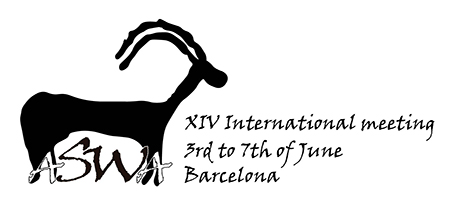Çatalhöyük is a Neolithic archeological site located in Anatolia in Turkey, dated to between 7100 cal BC and 5900 cal BC. This range can be split into early, middle, late, and final phases of the site's occupation. From the Neolithic onwards, the settlement was focused on two mounds, now referred to as Çatalhöyük East and West; this is indicated by research carried out in the various excavation areas (North, South, Istanbul, TP, TPC, and GDN).
Archeological studies of Çatalhöyük's TP Area were conducted between 2001 and 2010, and showed Neolithic and post-Neolithic occupation of the East Mound. Faunal studies from Neolithic contexts show that major changes occurred in subsidence and social behavior between the late and final phases of occupation, and revealed demographic decline at Çatalhöyük (e.g., Pawłowska, 2014, 2015, 2018, in press).
Here focus is placed on the post-Neolithic occupation phase of the tell, based on the 2019 matrix data (Marciniak & Hordecki, 2019), presented from a zooarcheological perspective. The faunal assemblages associated with various archeological contexts, from the Bronze Age through the Iron Age (Phrygian period), the Hellenistic period, to the Muslim period were studied to determine their nature, which proved to be complex. The ultimate goal of the research was to examine the depositional pathways of food refuse and to assess of the usefulness of faunal material from late contexts for further research. The negative consequences of approaching material as whole samples—without considering in detail their origins in individual contexts—will also be discussed.
References:
Pawłowska, K. 2014. The smells of Neolithic Çatalhöyük, Turkey: Time and space of human activity. Journal of Anthropological Archaeology 36 (2014): 1–11.
Barański M.Z., García-Suárez A., Klimowicz A., Love S., Pawłowska K. 2015. The Architecture of Neolithic Çatalhöyük as a Process. Complexity in Apparent Simplicity. In: Hodder, I., Marciniak, A. (Eds.), Assembling Çatalhöyük. Themes in Contemporary Archaeology 1: 111–126.
Pawłowska, K., Marciszak, A. 2018. Small carnivores from a Late Neolithic burial chamber at Çatalhöyük, Turkey: Pelts, rituals, and rodents. Archaeological and Anthropological Sciences. 10, 1225–1243.
Pawłowska, K. in press. Animals at Late Neolithic Çatalhöyük: Subsistence, food processing and depositional practices. In: Czerniak, L., Marciniak, A. (Eds.), Late Neolithic at Çatalhöyük East: excavations of upper levels in the Team Poznan Area.
Marciniak, A., Hordecki, J., 2019. TP Area. The 2019 matrix data for the post-Neolithic occupation phase of the tell.

 PDF version
PDF version
